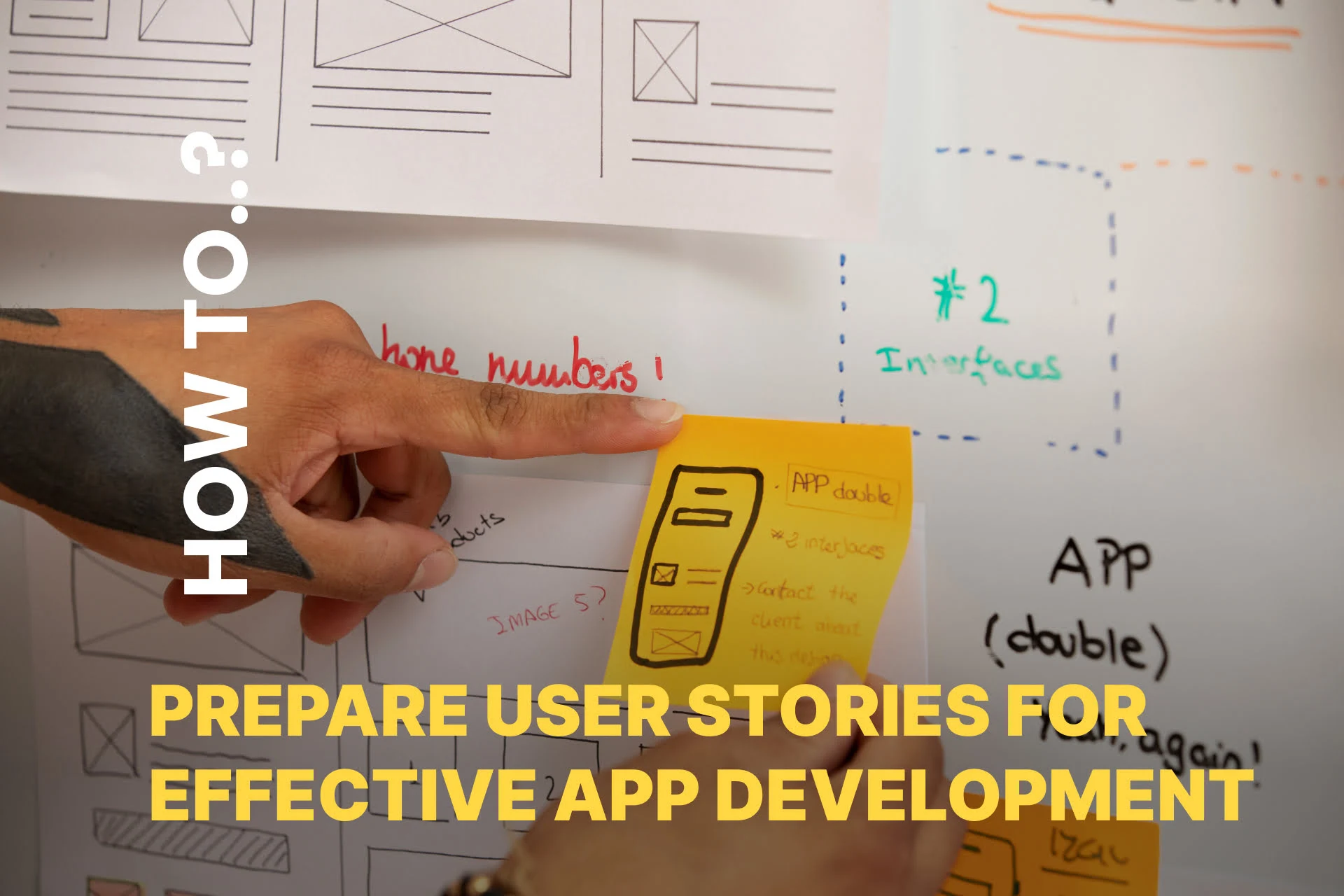What Are User Stories?
User stories are informal, natural language descriptions of one or more aspects of how a user interacts with your application. They follow a simple format:
As a [type of user], I want to [perform an action] so that I can [achieve a goal].
Example:
As a customer, I want to save items in a wishlist so that I can buy them later.
These stories are not detailed requirements – they are starting points for discussion, prioritization, and iteration.
Introduction
Building a successful app starts long before the first line of code. One of the most critical steps in early development is writing clear and effective user stories. These short, simple descriptions of a feature told from the user’s perspective help align developers, designers, and stakeholders around what truly matters: the user experience.
In this article, we’ll guide you through the process of preparing user stories that drive clarity, reduce misunderstandings, and lay the foundation for scalable, user-focused app development.
Why User Stories Matter in App Development?
User stories are essential because they:
- 📌 Center the development around real user needs
- 🔄 Encourage collaboration between cross-functional teams
- 🧩 Break complex features into manageable tasks
- 🧭 Guide UI/UX design and feature prioritization
- 🧪 Facilitate testing and validation
They are especially powerful in Agile development, where iterative delivery and fast feedback are key.
How to Prepare Effective User Stories
1. Start with User Research
Understand your users – their roles, pain points, behaviors, and expectations. Use data from:
- Interviews and surveys
- Analytics and heatmaps
- Support tickets or reviews
Without this step, your user stories risk being based on assumptions rather than actual needs.
2. Define User Roles (Personas)
Identify key user types that will interact with your app (e.g., “admin,” “guest,” “seller”). Each user story should be written from one role’s point of view.
3. Use the Classic User Story Format
Stick to this clear format:
As a [user], I want to [action] so that [goal]
This keeps the focus on the value of the feature, not just functionality.
4. Make It INVEST-Ready
Great user stories follow the INVEST criteria:
- Independent
- Negotiable
- Valuable
- Estimable
- Small
- Testable
Check if each story passes this test. If not, refine or split it.
5. Collaborate Across Teams
User stories are not just for product owners. Bring in developers, designers, testers, and stakeholders to discuss:
- Feasibility
- Dependencies
- UX flow
- Edge cases
This improves understanding and results in better user experiences.
6. Add Acceptance Criteria
Turn stories into testable units by writing acceptance criteria. For example:
✅ Item is added to wishlist
✅ Wishlist persists after logout
✅ User can remove item from wishlist
This ensures that everyone agrees on what “done” looks like.
7. Continuously Refine
User stories evolve as you build. Revisit and update them regularly to reflect new insights, tech constraints, or user feedback.
Common Mistakes to Avoid
❌ Writing stories too vague or too detailed
❌ Forgetting the “why” (user value)
❌ Mixing multiple user roles into one story
❌ Skipping collaboration with the dev/design team
❌ Treating stories as fixed requirements
How We Prepare User Stories at Appricotsoft
At Appricotsoft, we believe that great digital products start with clear, user-focused planning. That’s why user stories play a central role in every project we build – from mobile apps to complex web platforms. Here’s how we turn simple ideas into powerful, testable user stories that drive real results:
1. Discovery Workshops with Our Clients
Every project kicks off with collaborative discovery sessions. We sit down with our clients to explore the goals, target users, and core functionality. Together, we identify pain points, map out real user scenarios, and draft the first version of user stories – all based on actual business needs.
We ask:
• What does your user want to achieve?
• Why is this feature valuable?
• What outcome are we expecting?
This step ensures that we start with clarity and alignment, not assumptions.
2. Role-Based Mapping
We use real user personas to define stories for specific roles – like “restaurant manager”, “hotel guest”, or “platform admin”. This helps us build precise, personalized experiences that match the way your users actually think and interact.
Example: As a hotel guest, I want to scan a QR code to order room service so that I don’t have to download an app.
3. Acceptance Criteria First
Before any development begins, we define clear acceptance criteria for every user story. This means everyone – from developers to QA testers – knows exactly what needs to happen for a feature to be considered “done”. It keeps the project on track and the expectations consistent.
4. Agile, Collaborative Refinement
User stories are living artifacts. We refine them together with our design, development, and product teams throughout the project. Each sprint begins with reviewing and reprioritizing stories to match evolving business goals and timelines.
5. Focused on Outcomes, Not Just Features
We align every user story with a measurable outcome – whether it’s smoother onboarding, increased sales, better UX, or faster bookings. This way, we’re not just building features – we’re building value.
What You Get
✅ Faster development
✅ Fewer misunderstandings
✅ Features your users actually need
✅ A product that delivers results
At Appricotsoft, user stories are part of a bigger commitment: building smart, scalable, user-friendly solutions that grow with your business.
Conclusion
Preparing high-quality user stories is a foundational step toward building better apps faster. When done right, user stories not only save time and reduce rework – they also lead to happier users and more aligned teams.
Whether you’re a product manager, designer, or developer, learning how to prepare user stories for app development is one of the most valuable skills you can master.
